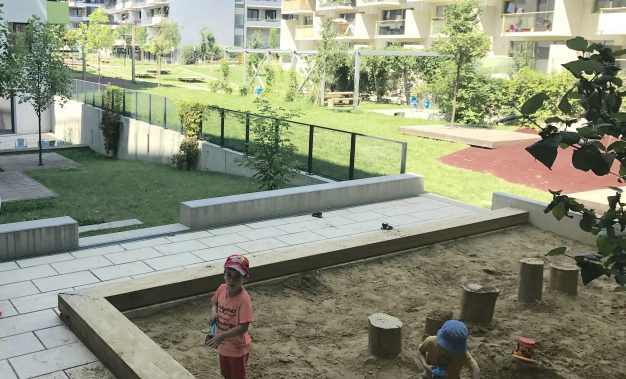
After Grenfell, architects should lead child friendly housing reform
In the wake of the the Grenfell Tower disaster in London, architect Dinah Bornat argues that people-centred designs have been neglected by systemised and profit driven developments. She calls for a return to planning policies that put human, child-friendly architectural principles back at the heart of a democratic vision for urban housing.
Architecture and specifically housing can be seen to be at a crossroads; the housing crisis, so long ignored, is now causing widespread pain, particularly in the south east of England. The shocking image and aftermath of the Grenfell Tower disaster a symbol of all that is wrong with our very basic need for shelter and what value we give to the places we create for people less fortunate than ourselves.
In a recent opinion piece in the Architects Journal, on this subject, I was quoted as saying ‘We (architects) are educated to bring together broader cultural and socio-economic factors that make up society – and work out a technical solution that creates places for people to live.’ The Editor, Emily Booth, finished the article by saying ‘No one is an island. We cannot live detached from each other. At the heart of all housing should be the human.’
Shoddy solutions
Architects have for a long time been conveniently blamed for the ills of postwar housing. Never mind that at the time they were calling for children not to be housed in tower blocks, and that the majority of these shoddy solutions were driven by system builders. The subsequent, and intended, fall out was the destruction of local authority architecture departments.
we turned our back on people and fell in love with developers
Fast forward two generations and we have lost the knowledge, the skills and experience that were flourishing in places like the Greater London Council, where human scale places were being successfully created. Instead we turned our back on ‘people’ and fell in love with developers; talking their language so fluently you now can’t put a cigarette paper between us.
As this editorial attests, much of the profession has now had enough, which is why my work, looking at children’s use of external spaces in residential areas, is gaining a lot of interest. It suggests that neighbourhoods where children play outside unsupervised, there are more adults outside too. This is welcome news, not just for local authorities but for private developers; land is valuable and it needs to work hard.
How children behave
Through my research and practice, I aim to speak the truths about children, play and independent mobility through the language of development and design. I’ve learned to listen to the expertise of the play sector, I’ve learned to watch with my own eyes how children behave in the local environment and I’m hoping to influence the industry and effect change.
It takes at least seven years to train an architect, and rightly so, it’s harder than rocket science. Our training teaches us to take every relevant scrap of information, from the wider local social context through to the combined cladding detail, to listen to the client and to translate experience and emotion into real briefs that lead to real places.
Historically, architects were seen as the ‘lead’ professionals. Now, if we are lucky, we are kept on as advisors
Every brick, every careful placing of a handle, a threshold to a front door, a courtyard where children can play, forms part of a whole neighbourhood. Yet we can’t do this effectively if we are kept at arms length in the process. Historically, architects were seen as the ‘lead’ professionals. Now, if we are lucky, we are kept on as advisors in the ‘Design and Build’ contract. Profit and risk are the watchwords.
As architects in new developments and estate regeneration, where we can we must change. But we need a policy and planning system that empowers us to do this. We need to call time on a profit-driven, individualist industry and we need society to trust us again; and mandate us to design and create the neighbourhoods that are safe for children to play out and a delight for all of us to live in.
Dinah Bornat
Dinah is founding co-director of ZCD Architects
Photo: Adrian Voce





The trend of Developer Architectural practice in india maybe a decade or more behind London. Agree with Dinah!